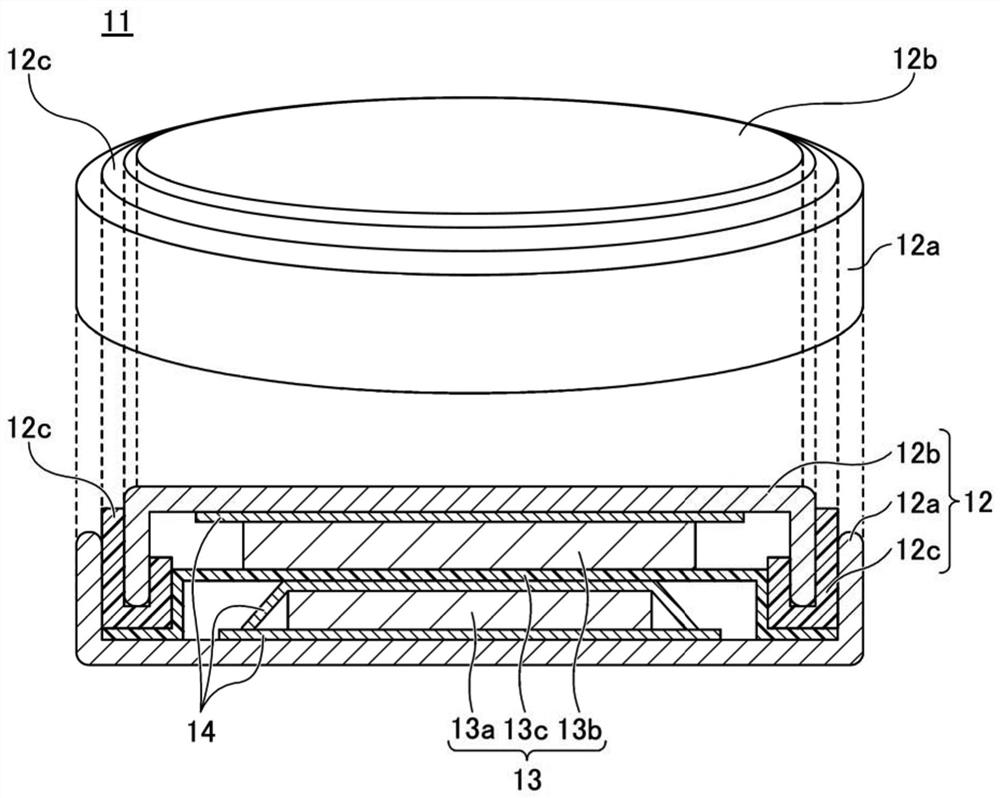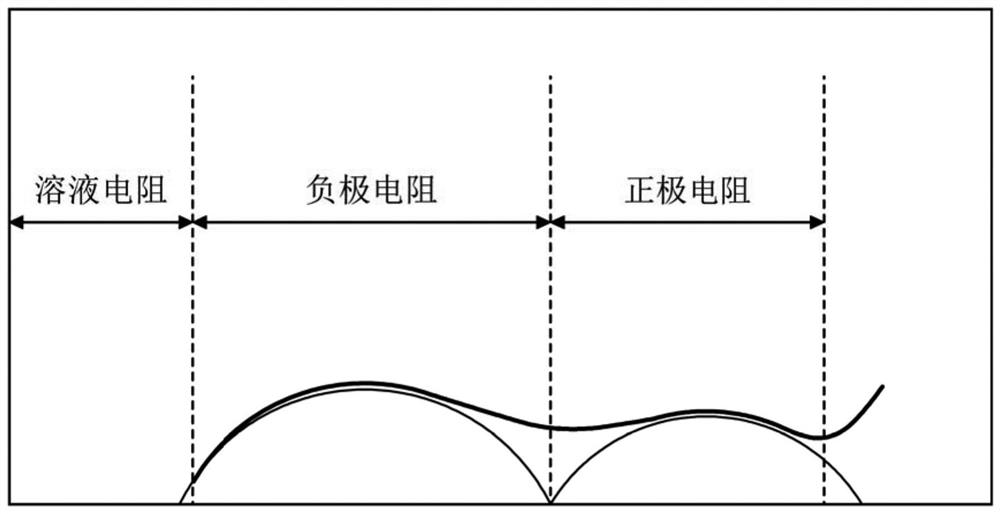Positive electrode active material for non-aqueous electrolyte secondary battery, and non-aqueous electrolyte secondary battery
A positive active material, secondary battery technology, applied in non-aqueous electrolyte batteries, active material electrodes, secondary batteries, etc., can solve the problem of lack of short-circuit resistance characteristics discussion and research
- Summary
- Abstract
- Description
- Claims
- Application Information
AI Technical Summary
Problems solved by technology
Method used
Image
Examples
Embodiment 1
[0198] As the base material, a known technology obtained by mixing and firing a composite oxide containing Ni as the main component and lithium hydroxide was used. 1.01 Ni 0.80 co 0.10 mn 0.10 o 2 Represented lithium-nickel composite oxide particles.
[0199] Added to 150g of the base material, the ratio Li / W of the contained lithium (Li) to tungsten (W) was adjusted to 2, the tungsten concentration was 0.86mol / L, the pH was 8.4, and the temperature was 25°C 150mL of liquid tungsten-containing alkaline solution, and then stirred for 10 minutes.
[0200] In addition, when preparing a tungsten-containing alkaline solution, lithium hydroxide was used as a base, tungsten trioxide was used as a tungsten compound, and water was used as a solvent.
[0201] After stirring, solid-liquid separation was performed by filtering using a Buchner funnel (Nutche). The water content of the cake (cake) after solid-liquid separation, that is, the raw material mixture was 9.5% (mass ratio) (...
Embodiment 2
[0214] As the base material, the composition of Li 1.03 Ni 0.70 co 0.15 mn 0.15 o 2 The lithium nickel composite oxide was the same as in Example 1 except for this point, whereby a positive electrode active material was obtained and evaluated. The evaluation results are shown in Table 1.
[0215] It should be noted that the composition of the obtained positive electrode active material was analyzed by the ICP method, and it was confirmed that the molar ratio of Li:Ni:Co:Mn was 1.03:0.70:0.15:0.15, and the tungsten content relative to Ni, Co and The ratio of the total amount of substances of Mn was 0.9 at%.
[0216] From this, it can be confirmed that the ratio of the amount of lithium (Li), nickel (Ni), cobalt (Co), manganese (Mn) and tungsten (W) contained in the obtained positive electrode active material is Li:Ni:Co :Mn:W=1.03:0.70:0.15:0.15:0.009.
[0217] Observation of the obtained positive electrode active material with a scanning electron microscope (SEM) reveal...
Embodiment 3
[0220] Changing the composition of the base metal to Li 1.01 Ni 0.82 co 0.15 al 0.03 o 2 , was the same as in Example 1 except this point, whereby a positive electrode active material was obtained and evaluated. The evaluation results are shown in Table 1.
[0221] It should be noted that the composition of the obtained positive electrode active material was analyzed by the ICP method, and it was confirmed that the molar ratio of Li:Ni:Co:Al was 1.01:0.82:0.15:0.03, and the tungsten content relative to Ni, Co and The ratio of the total amount of substances of Al was 1.1 atomic %.
[0222] From this, it can be confirmed that the ratio of the amount of lithium (Li), nickel (Ni), cobalt (Co), aluminum (Al) and tungsten (W) contained in the obtained positive electrode active material is Li:Ni:Co :Al:W=1.01:0.82:0.15:0.03:0.011.
[0223] Observation of the obtained positive electrode active material with a scanning electron microscope (SEM) confirmed that the lithium-nickel ...
PUM
| Property | Measurement | Unit |
|---|---|---|
| specific surface area | aaaaa | aaaaa |
| electrical resistivity | aaaaa | aaaaa |
| particle size | aaaaa | aaaaa |
Abstract
Description
Claims
Application Information
 Login to View More
Login to View More - R&D
- Intellectual Property
- Life Sciences
- Materials
- Tech Scout
- Unparalleled Data Quality
- Higher Quality Content
- 60% Fewer Hallucinations
Browse by: Latest US Patents, China's latest patents, Technical Efficacy Thesaurus, Application Domain, Technology Topic, Popular Technical Reports.
© 2025 PatSnap. All rights reserved.Legal|Privacy policy|Modern Slavery Act Transparency Statement|Sitemap|About US| Contact US: help@patsnap.com



